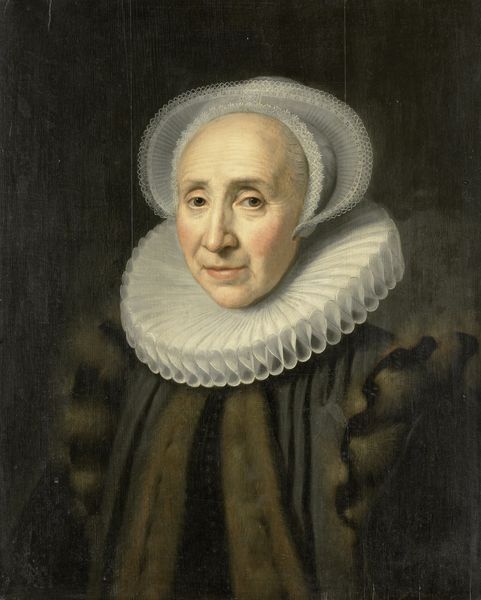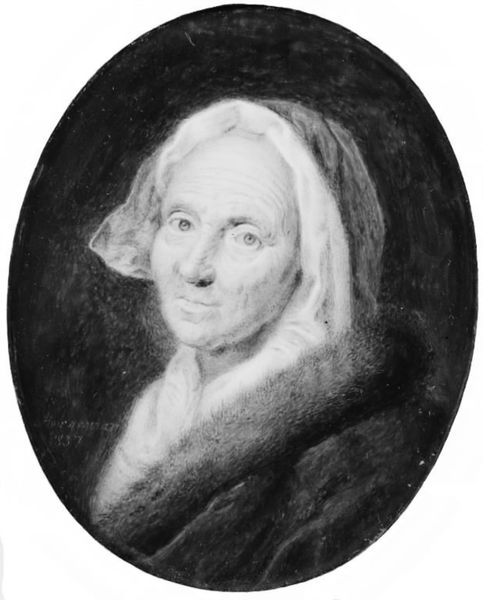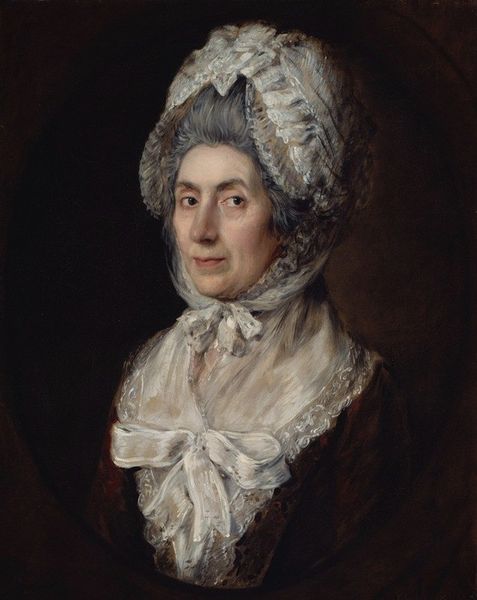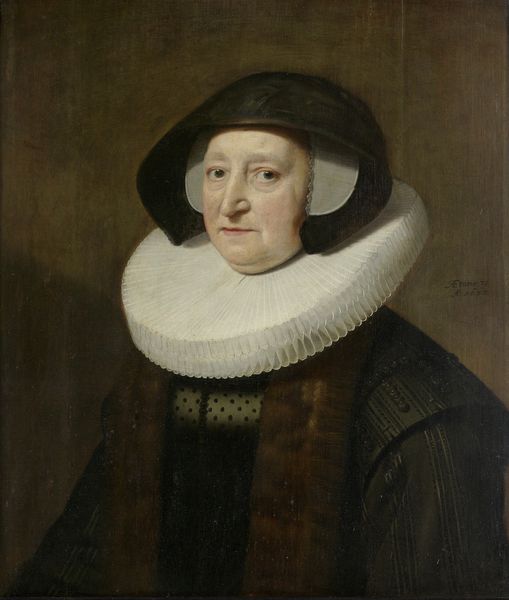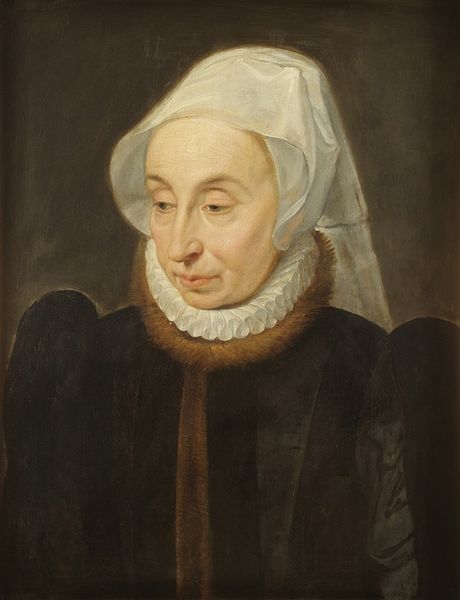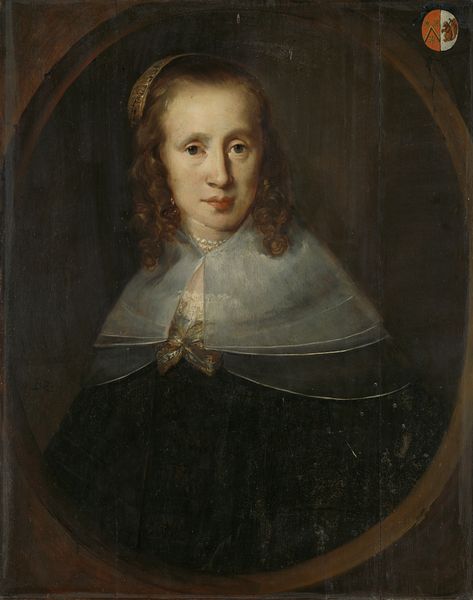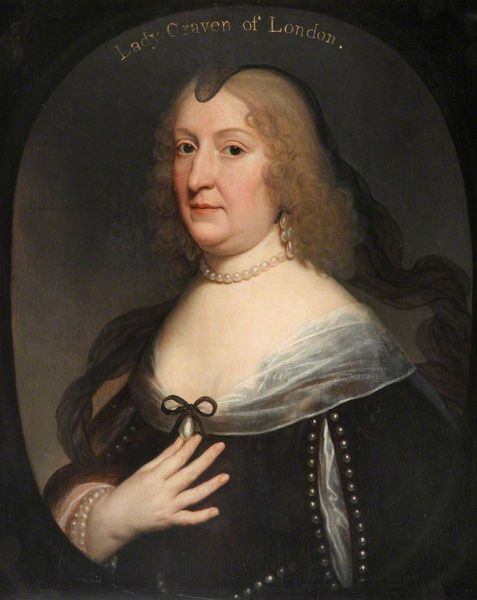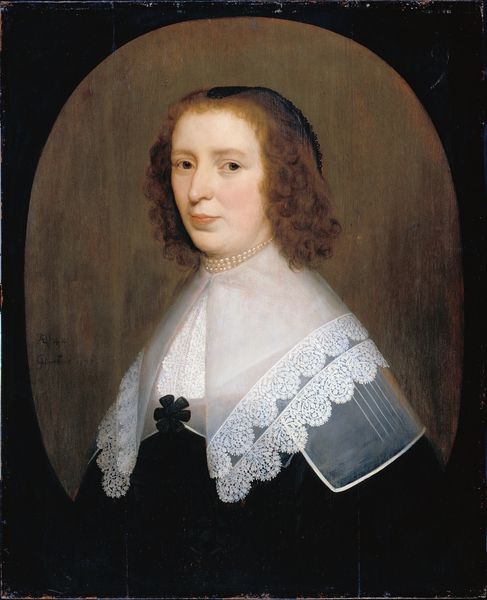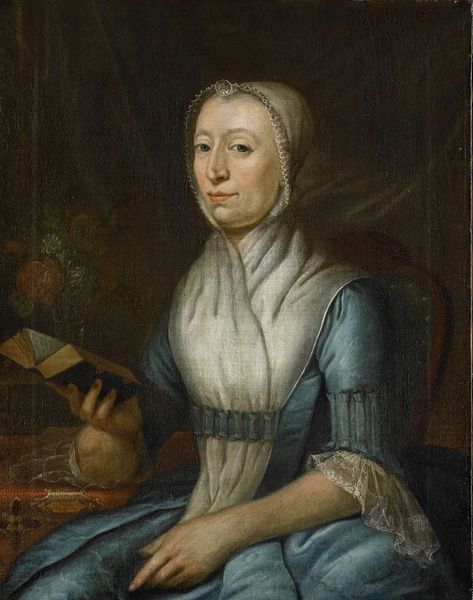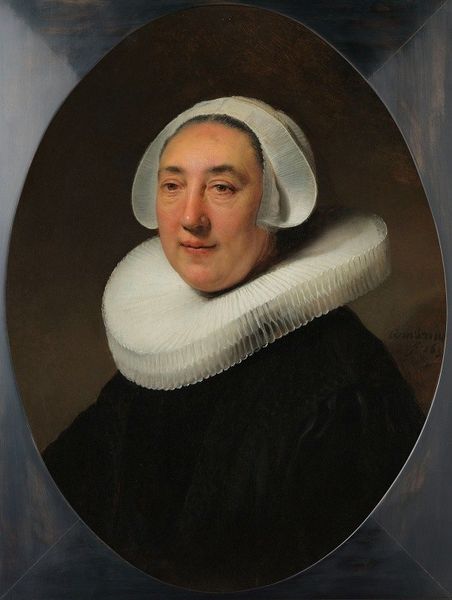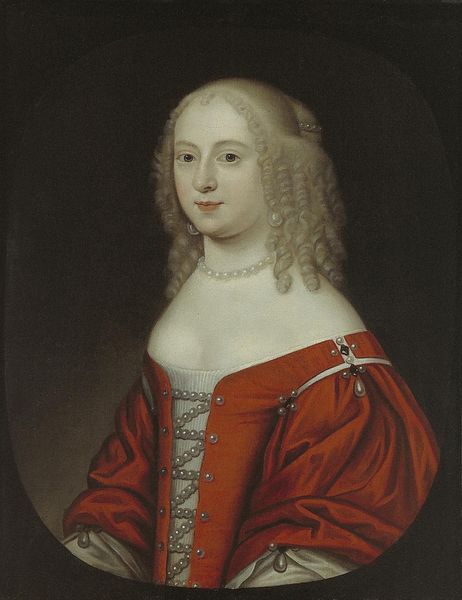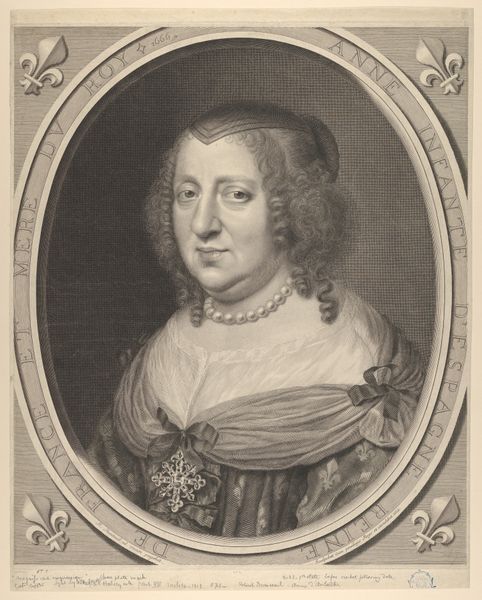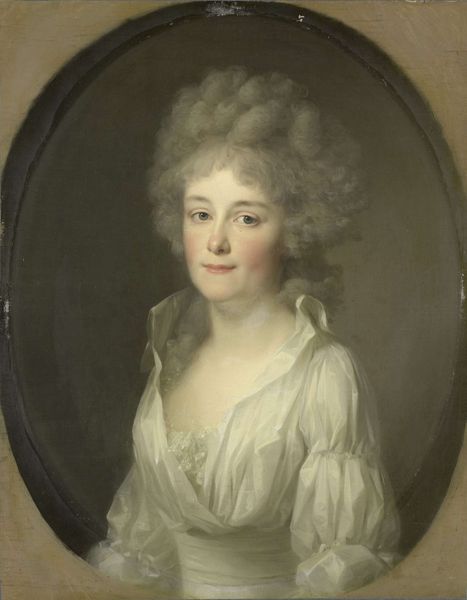
Portrait of Josnia Parduyn (1642-1718), second wife of Aernout van Citters 1705
0:00
0:00
painting, oil-paint
#
portrait
#
baroque
#
painting
#
oil-paint
#
realism
Dimensions: height 44 cm, width 35 cm, depth 7.5 cm
Copyright: Rijks Museum: Open Domain
Curator: This captivating oil painting, dating back to 1705, presents us with a portrait of Josnia Parduyn, the second wife of Aernout van Citters. The artist is Godfried Schalcken, and the artwork can be found here at the Rijksmuseum. Editor: My first impression is one of understated elegance. The subdued color palette contributes to the overall serene, almost contemplative mood, framed as she is within that subtle oval. Curator: That serenity is interesting, especially considering the social context. The ruff and cap she wears, while meticulously rendered, signify her status and role in society – wife and member of a certain class. These garments can feel symbolic, even imposing. Editor: Absolutely, but Schalcken softens that potentially rigid symbolism. Notice the textures – the delicate rendering of the lace against the heavier velvet, the subtle play of light across her face. The painting style imbues realism and also reveals baroque style conventions, evident in the precise detail and dignified atmosphere. Curator: Her gaze, too, holds a wealth of implications. Is it inviting or reserved? Does it represent the domestic sphere, or perhaps project a sense of awareness beyond it? The symbolism depends so much on the viewer's cultural perspective. Editor: True, the semiotic richness resides in that tension. The composition directs us so intimately towards her face and expression; the limited tonal range amplifies it. It suggests restraint. The form underscores this paradox—ostensibly showcasing wealth, it quietly exudes inner contemplation. Curator: And perhaps that is the genius of portraiture of the era. It encapsulates individual personality while conforming to social dictates. This is something to keep in mind, as these painted figures become cultural touchstones, reflecting a collective identity. Editor: Seeing beyond just a presentation of class status unveils, indeed, a more profound reflection on identity itself. I think I better appreciate Schalcken’s restraint.
Comments
No comments
Be the first to comment and join the conversation on the ultimate creative platform.
